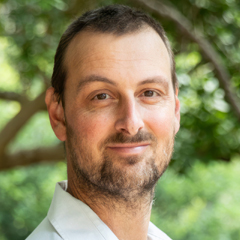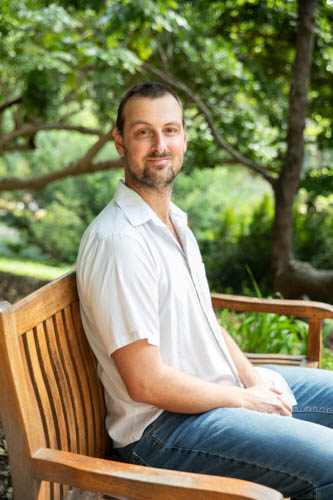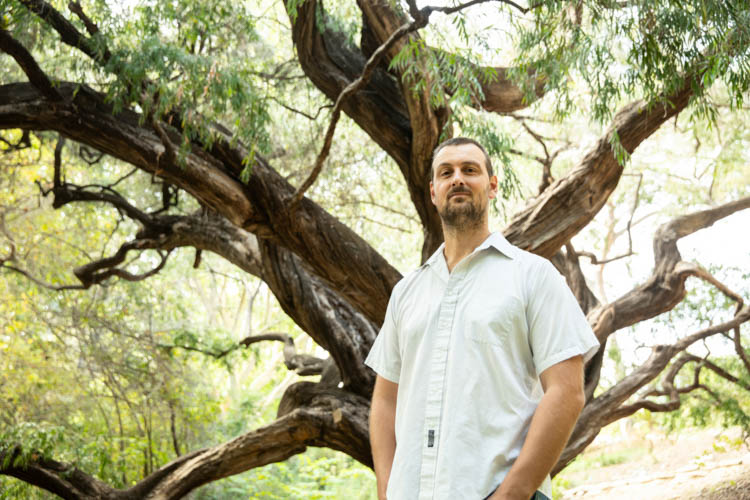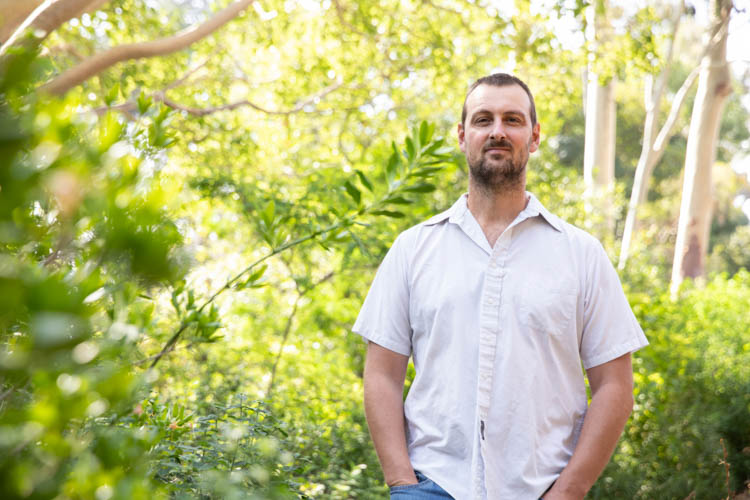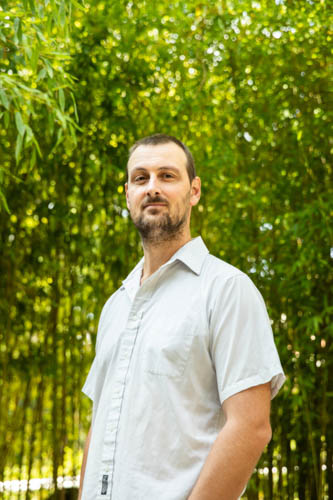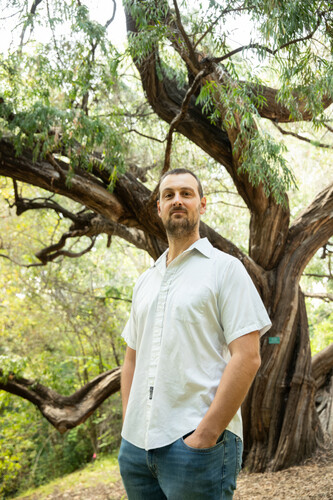About Park's Work
A. Park Williams is a hydroclimatologist studying the impacts of climate on terrestrial water systems. Williams uses statistical analysis of climate data, reconstructions of past ecosystem behavior, and detailed understanding of plant ecology to unravel the feedback between atmospheric (temperature, air moisture) and land (water availability, soil moisture, vegetation responses) processes. His research is providing new insight into how climate change influences drought, wildfires, and tree mortality.
In early work, Williams analyzed tree-ring width chronologies alongside yearly climate data at over 1,000 sites across the United States. In this way, he could tease out how trees respond to different climate variables. He then developed a model to predict growth patterns for a variety of tree species in light of predicted changes in regional climates. Using tree-ring data representing the last millennium, Williams created a novel forest drought stress index for the southwestern United States that shows the influence of specific climate factors on forest decline. Williams determined that vapor pressure deficit (VPD), a measure of the atmosphere’s dryness, is a critical factor in drought stress and wildfire size (that is, area burned). Williams showed that forest stress is equally influenced by warm-season VPD and cool-season precipitation. Lower than normal precipitation—leading to lower soil moisture—combined with high VPD (drier air) decreases photosynthesis and plants’ carbohydrate reserves. He posits that projected increases in VPD will cause drought stress that exceeds anything from the last millennium. Such severe stress could trigger transformations of forests into shrub- or grasslands. In more recent work, Williams disentangles the contributions of anthropogenic, or human-caused, climate change to droughts and wildfires. His analysis of climate and hydrological models, in tandem with reconstructions of summer soil moisture from tree-ring data, reveals that 2000–2022 was the driest period in southwestern North America for the last 1,200 years. His modeling shows that human-caused climate change pushed what naturally would have been a moderate drought into a megadrought.
Williams and a colleague have shown that warmer temperatures and higher VPD have significantly increased the aridity and flammability of forest vegetation. They estimate that anthropogenic climate change caused double the amount of forest to burn in the western United States in 1985 to 2015, compared to what would have burned without human influences. He is currently developing a wildfire forecast model that takes into consideration plant flammability and atmospheric and soil aridity. Williams’s investigations into how atmospheric and land-based water cycles react to our changing climate helps us prepare for extreme climate events and better manage natural resources.







